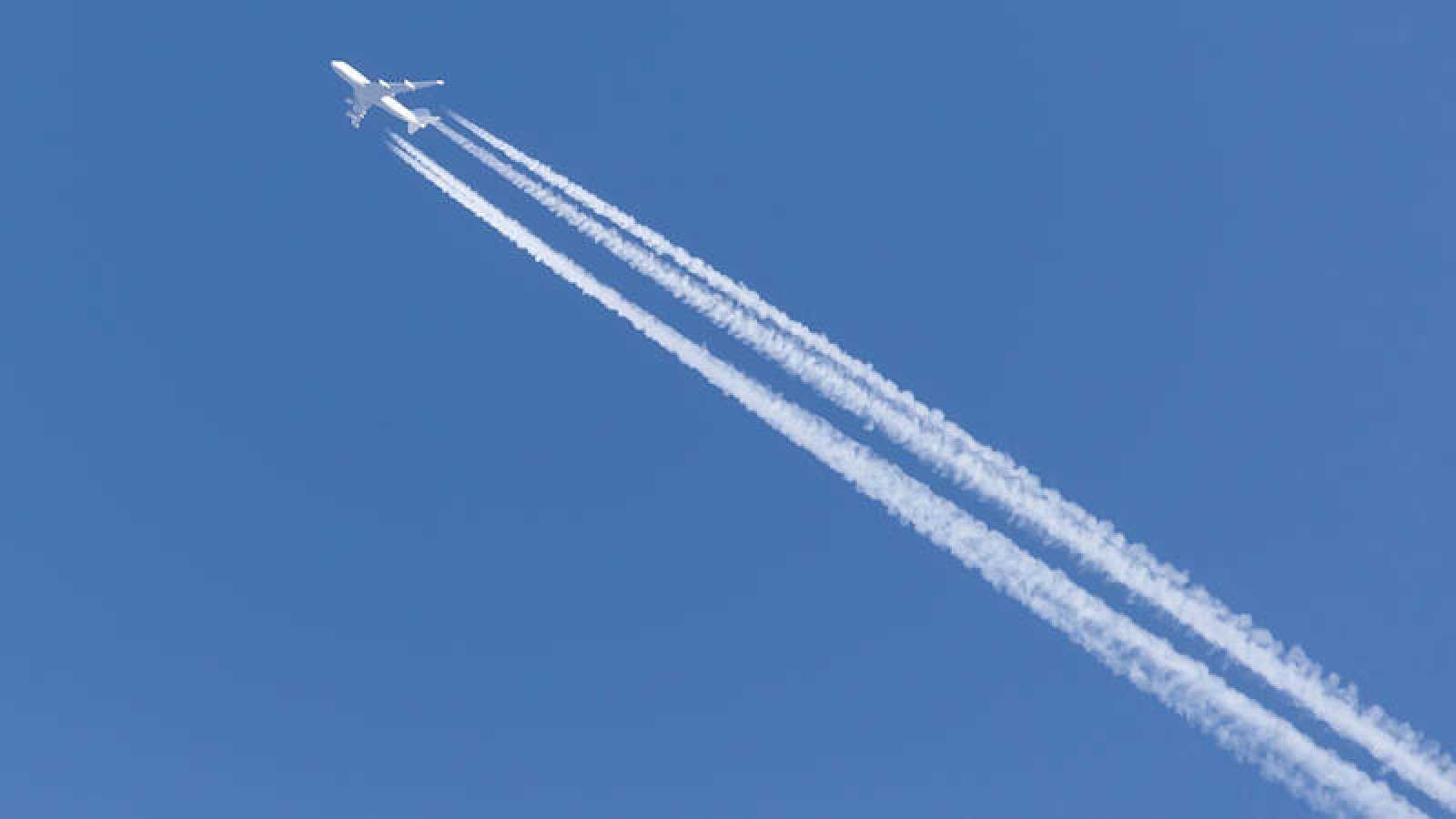What are airplane contrails?
The white trails that aircraft sometimes leave in their wake are produced as a consequence of the high temperature of the gas jets that come out of the engines (often at temperatures above 500º C) in contrast to the low temperatures – of the order of minus 56ºC – which prevail at the heights at which commercial flights normally take place, which causes condensation and subsequent freezing of the water vapor they contain. These condensation trails – popularly known as “contrails”, a word derived from the English “condensation trails” – can turn into clouds, depending on the prevailing humidity, temperature and wind conditions at all times.
As a general rule, condensation trails are generated at very high altitudes, up to 15 kilometers from the ground, so the resulting clouds in cases where the contrail does not dissipate due to poor ventilation are known as cirrus and cirrostratus. They are clouds formed by small ice crystals that do not produce precipitation, but that dampen the intensity of solar radiation.
A very simple example explains the physical phenomenon of condensation. You just have to look at the “wake” that we can leave ourselves on a cold winter morning. When we exhale the hot air from our lungs, a small cloud forms. That condensation of the humid and warm air coming from our lungs, in contact with the cold outside, forms our own wake.
Contrails and global warming
The expulsion of combustion gases that come from aircraft engines contain, in addition to water vapor, various gases responsible to a greater or lesser extent for the greenhouse effect on the planet. Recent research has suggested that the ice particles contained in the contrails cause a greenhouse effect. For this reason, work is being done on the achievement of new renewable fuels, and the implementation of hybrid engines and powered by hydrogen cells, with greater efficiency and energy efficiency and with less incidence in the formation of condensation trails.
Contrails help predict the weather
The nature and persistence of aircraft contrails make it possible to determine the atmospheric conditions at altitude quite accurately, and to predict possible weather changes. For example, a short, thin line-shaped wake indicates low humidity air at high altitude – a sign of good weather – while a denser and more durable one is indicative of humid air at high altitude and can anticipate a situation of storms. The sinuous and undulating contrails indicate strong gusty winds in height.
The State Meteorological Agency (AEMET) explains in its blog that “apart from the strategic interest for military flights, persistent contrails do have relevance today in the field of prediction, particularly in the long-term prediction of the weather.
